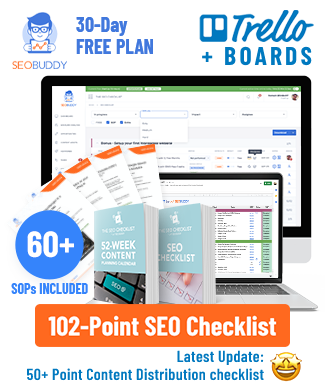A picture can say more than a thousand words, but it does not provide any additional context. The caption fulfills this - not to be underestimated - purpose.
However, creating good Instagram captions is not easy. We have therefore put together a few tips for you to help you create meaningful, concise captions.
First of all, you should allow yourself sufficient time for this task. Create different variants and ask friends or colleagues for their opinion. Of course, you should post your content as soon as possible, but more importantly, it's engaging. This is also supported by the fact that Instagram has changed its algorithm so that users can now see the content in their feeds that they are most likely to find interesting. So the reach of your posts depends on how many "likes" and comments they get. It is therefore worth taking the time to create content that will actually appeal to and inspire your customers.
The length of the caption is also crucial. A maximum of 2,200 characters per caption is available on Instagram. Compared to the 140 characters Twitter gives you, this is quite long. Note, however, that users will only see the first three to four lines at first and will have to actively display the rest by tapping “More”. So, mention the most important things first to make sure that it definitely shows. Apart from that, you can easily make full use of the available space. Captions are a great opportunity to provide background information about the photo posted. For example, Humans of New York uses captions to quote the people they photograph.
You can also include a call-to-action in your caption to encourage your target audience to like your photo, comment on it, or share it with friends. You can also direct them to the link mentioned above in your profile so that they click it and look at your new product or read a new blog post. Make sure to include the correct link (to your latest post). A tip: use shortened tracking URLs so that you can keep track of how your Instagram activities are increasing your traffic.
Also, don't forget to include a geo-tag. This is because the interaction rate for posts with a location tag is 79% higher than for posts without a geo-tag. By adding a location to your post, you provide another way for users to find your content. And the more users look at your content, the more it is interacted with.
Another crucial factor in choosing the right style and tone of voice for your Instagram appearance. This may surprise you, but the truth is, a different tone of voice is common and appropriate on every social platform. This means that a formulation can be perfect for Twitter but unsuitable for Instagram at the same time. The best results are usually achieved with posts that sound casual and authentic. Experiment a little with emojis and similar tools to give your Instagram presence a very individual touch. Don't get disheartened if you don't get it accurate the first time. It can take a while to find the right voice for your brand.
When in doubt, keep your captions short. There is hardly any correlation between the length of the caption and the interaction rate, but short captions increase the expressiveness of your content.
Use hashtags on Instagram
Everyone knows them and most of them also use them: hashtags. The tags originally developed for Twitter have now become an integral part of any social network. A hashtag consists of one or more keywords that are strung together without space and preceded by a hash (#). They are used to assign contributions to specific subject areas such as specific events and conferences or general topics such as pop culture and entertainment etc. They are a great way to increase the reach of your posts.
This is how hashtags are used on Instagram
Just like all other social media feeds, Instagram feeds are always changing. When you consider that over 95 million photos are shared on the platform every day, this is not surprising either. For you personally, this huge amount of content means that you have to come up with something to stand out from the crowd. And that's where hashtags come in.
Hashtags are used to bundle posts from Instagram users that would otherwise be unrelated to one another in a single feed. If your account is public, your post will be shown to anyone who searches for a hashtag that you used in this post.
Instagram's hashtag feeds are kept quite simple and are intended to make it as easy as possible for users to find similar content quickly. Each feed is divided into three areas: "Cutting-edge", "Current" and "Similar". The “Cutting Edge” section is at the top of a popular hashtag or location feed and includes the nine posts that are currently being most interacted with. Under "Current" you will find a live stream of all posts that have been marked with the selected hashtag, whereby the most recent post is always displayed first. If you choose a hashtag that is currently very popular and widely used, your post will move down the feed very quickly. The Similar section is a great resource for finding more hashtags that other users are using in the context of this topic.
Using and creating hashtags is very easy. Simply choose any sequence of characters or numbers or even emojis and add up to 30 hashtags to your caption or comment. And don't forget to make your account public so your posts will also show up in the hashtag feeds.
Choosing the right Instagram hashtag
As you can see, hashtags are very important to your Instagram success. The only question left is how to choose the most suitable hashtags for a post. The best way to find suitable keywords and current trends is directly on Instagram. If you still have no clues, you should first look around on the "Search" tab. Tap currently popular posts and see which hashtags have been used.
If you already know which hashtag you'd like to use, you can use the Search section to find popular similar hashtags. To do this, tap on the magnifying glass in the menu bar at the bottom and then enter the hashtag you want in the search field at the top. On the "Tags" tab you can check how many posts have been tagged with your hashtag or similar hashtags.
To make sure your post is as long-lasting as possible, choose a mix of general, popular, and specific hashtags. In some cases, it is also advisable to create a brand-specific hashtag. For example, some companies have created a new, dedicated hashtag for marketing a new product, an Instagram campaign, an event, or the like. In this case, however, make sure that your hashtag does not actually exist and encourage your target audience to use your hashtag.
Position Instagram hashtags correctly
Now that you've found the perfect combination of hashtags for your new post, it's time to decide where to put the hashtags in your content. Again, it is important not to overdo it. Hashtags should fit naturally into your caption. A study that looked at 100 of the most successful brands on Instagram showed that they used an average of just 2.5 hashtags per post. We recommend limiting yourself to one to four hashtags per post so as not to overwhelm your target group.
If you're struggling to incorporate the hashtags you've chosen into your caption, just put them at the end of your text or in the first comment. The position of hashtags does not affect how they work. So you don't have to incorporate them into the text at all costs.













0 Comments:
Post a Comment